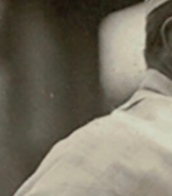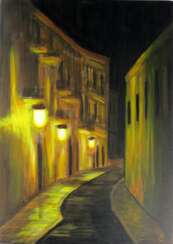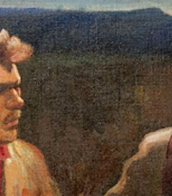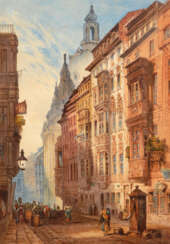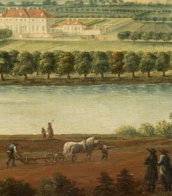street





William Glen Crooks, an American neorealist painter, has carved a niche for himself with his unique approach to landscape and urban scene painting. Unlike traditional representations, Crooks' works omit human figures, substituting them with vehicles to embody human traits and emotions. His approach to capturing the essence of city and small-town life through this lens has garnered attention for its depth and thoughtfulness. William Glen Crooks' dedication to his craft began at a young age, evolving from drawing comics to a self-taught mastery in representational painting, driven by a passion to defy the norms of modernism that dominated his formative years. His self-imposed rigorous practice of drawing laid the foundation for his distinctive style.
William Glen Crooks' work has been the subject of several exhibitions, including a notable showcase at the Oceanside Museum of Art (OMA). The exhibition, "The Point of View," marked his first museum exhibition and featured twenty-three paintings that spanned over twenty-five years. These works emphasize cityscapes, nostalgic urban scenery, and expansive landscapes, illustrating Crooks' ability to translate everyday scenes into compelling narratives. His paintings are celebrated for their illumination of light and shadow, transforming landscapes into metaphors that reflect his perceptions of the natural world.
His technique and subject matter draw inspiration from a blend of influences, including the landscape painters of the 1800s, Edward Hopper's narrative style, Mark Rothko's color fields, Wolf Kahn's liberating techniques, and John Frederick Kensett's luminism. This eclectic mix has allowed William Glen Crooks to explore the opacity of light and transparency of shadow in a way that brings a fresh perspective to the landscape genre, making his work resonate with a contemporary audience while retaining a timeless quality.
For collectors and experts in art and antiques, William Glen Crooks offers a unique investment in the realm of contemporary realism. His paintings invite viewers to explore the subtle interplay of light, shadow, and form, capturing the quiet moments of daily life with a profound depth and sensitivity.
To stay updated on William Glen Crooks' latest works and exhibitions, signing up for newsletters from galleries and museums that feature his work, such as the Oceanside Museum of Art, is recommended. This subscription will ensure that enthusiasts are always informed about new sales, auction events, and showcases related to Crooks' evolving portfolio.


Gerd Winner is a contemporary German painter, sculptor, graphic artist, printmaker and university lecturer.


Claes Oldenburg was a Swedish-born American sculptor, celebrated for his groundbreaking contributions to the field of public art and sculpture. With a career spanning over several decades, Oldenburg redefined the boundaries between sculpture and everyday objects, bringing a whimsical yet profound commentary on consumer culture and the urban environment. His talent for transforming the mundane into the monumental made his work not only iconic but also a vital part of the conversation about the role of art in public spaces.
Oldenburg's sculptures are characterized by their colossal scale and imaginative designs, often inspired by everyday items. Perhaps his most famous works include "Clothespin" in Philadelphia and "Spoonbridge and Cherry" in Minneapolis. These pieces are emblematic of his unique approach to sculpture, where familiar objects are reimagined in unexpected contexts, challenging viewers to see the world around them in new ways. His ability to blur the lines between art and life, combined with his playful exploration of form and material, has left an indelible mark on the art world.
For collectors and experts in art and antiques, Oldenburg's works represent not just significant artistic achievements but also compelling investments. His sculptures and installations continue to be celebrated in museums and galleries worldwide, testament to his enduring influence and relevance in the contemporary art scene. For those interested in the intersection of culture, art, and urban life, Oldenburg's legacy offers rich insights and inspiration.
To stay informed about new product sales and auction events related to Claes Oldenburg, we invite you to sign up for updates. This subscription service is designed for collectors and art enthusiasts eager to keep abreast of the latest developments and opportunities in the world of art and antiques. Join us in exploring the remarkable contributions of Claes Oldenburg to the art world.





Friedensreich Regentag Dunkelbunt Hundertwasser was an Austrian visual artist and architect who also worked in the field of environmental protection.
Hundertwasser stood out as an opponent of "a straight line" and any standardization, expressing this concept in the field of building design. His best known work is the Hundertwasserhaus in Vienna, which has become a notable place of interest in the Austrian capital, characterised by imaginative vitality and uniqueness.


Dennis Stock was an American photographer known for his iconic images of celebrities and musicians, as well as his extensive coverage of social issues and cultural events.
Stock began his career as a freelance photographer in the 1950s and was soon hired by the Magnum Photos agency, where he worked alongside other influential photographers such as Robert Capa and Henri Cartier-Bresson. He quickly became known for his photographs of jazz musicians, including Miles Davis, Louis Armstrong, and Duke Ellington.
In 1955, Stock received an assignment from LIFE magazine to photograph a young actor named James Dean. The resulting images, including a now-famous photograph of Dean walking through Times Square in the rain, became some of the most iconic photographs of the 20th century.
Stock continued to photograph celebrities and cultural figures throughout his career, including Audrey Hepburn, Marlon Brando, and Andy Warhol. He also covered major events such as the civil rights movement, the Vietnam War, and the Woodstock music festival.
Stock's work has been exhibited in galleries and museums around the world and has been the subject of several books and documentaries. He was known for his ability to capture intimate moments and his talent for revealing the personalities and emotions of his subjects through his photographs.

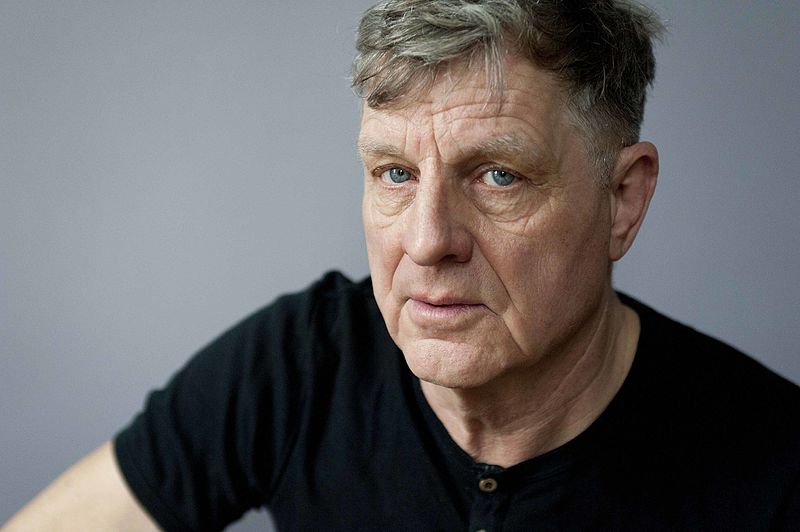
Rainer Fetting is a German painter and sculptor.
Rainer Fetting was one of the co-founders and main protagonists of the Galerie am Moritzplatz in Berlin, founded in the late 1970s by a group of young artists (mainly painters) from the class of Karl Horst Hödicke at the former Berliner Hochschule für Bildende Künste (Berlin Art Academy, today known as Universität der Künste). Fetting is now one of the internationally best known contemporary German artists, having created a large oeuvre of expressive figurative paintings covering many different kinds of subject-matter, as well as many bronze sculptures.


Friedensreich Regentag Dunkelbunt Hundertwasser was an Austrian visual artist and architect who also worked in the field of environmental protection.
Hundertwasser stood out as an opponent of "a straight line" and any standardization, expressing this concept in the field of building design. His best known work is the Hundertwasserhaus in Vienna, which has become a notable place of interest in the Austrian capital, characterised by imaginative vitality and uniqueness.







































